At our Thrive fundraiser, we are celebrating the power of creativity and community. One of the ways we are doing that is through a line-up of inspiring performances of both students and local artists!
Learn more about each of our performers and the power they find in art.
All City Choir
All City Choir is led by seasoned Teaching Artist Erica Merritt!
Erica Merritt is a singer songwriter, vocal coach, and master teaching artist. She is also a social and human services specialist with more than 25 years of experience, as an artist as well as a worker in youth and young adult development in the greater King County region. She began teaching choir in 1998, and has continued to teach voice, songwriting and choir with organizations such as Langston Hughes, Arts Corps, MoPOP, The Residency with Macklemore, and The Creative Advantage.
Erica’s work focuses on the belief that art changes the lives of those who experience its transformative and healing powers. Her teaching style includes laughter, critical thinking, self-reflection, full transparency and fosters a growth mind-set. Her student-centered pedagogy creates a learning space where the student becomes the teacher.
She has enjoyed the amazing opportunity to combine her passions of social well-being and music through the art of teaching. Erica takes great pleasure in supporting her students in becoming the best version of themselves.
What is All City Choir and how did it come to be?
All City Choir is comprised of youth ages 16 to 25 from all across Seattle King County area. They are joined together by their love of singing and creating beautiful music. We are not just choir, but a musical family that cheer each other on and keep giving each other reasons to smile. It is a safe space where young creatives can come and express their selves through music and song.
What are some of the practices you use in the choir room to help students thrive?
Self-empowerment is key, so I’m constantly reminding everyone that they are as great as they allow themselves to be, and it all starts with a growth mindset: believing that you can and believing that you will. I constantly challenge the limits that the students put upon themselves and raise the bar higher, and then watch them surpass it.
What has it been like getting ready for this performance?
It has been an invigorating experience. We have about six new members that joined within the last month and we are all trying to get to know each other and each other’s voices while blending in perfect harmony, so I would say intense at times but lots of fun.
How does music relate to the building of a more equitable world?
Music is universal and a great example equity, as every voice is welcomed and valued. This creates a sense of belonging and inclusiveness.
Christian Paige
Christian Paige is an Emmy nominated spoken word poet, a professional speaker and educator who speaks at schools, conferences, and events across the United States. Paige has spoken to hundreds of thousands of people and loves to work with young people who are committed to doing good in the world. Paige is a first-generation college graduate, an Actsix Scholar and is passionate about community, anti-racism, equity, and empowerment. He has spent his entire career in and around education advocating for historically marginalized populations and working to create equitable environments where young people can thrive.
He provides motivation, inspiration, encouragement and truth through school assemblies, professional development sessions, conference keynotes, community gatherings, and poetry performances.
Paige’s work has appeared on national stages, on television, and in museum exhibits. Paige is one of the top youth speakers in the Pacific Northwest and is in demand nationally however, Paige believes there is no place like home. He was born and raised in Tacoma, Washington where he currently lives and serves as The Tacoma Poet Laureate. He believes that our voice is our most powerful tool and encourages others to use their voice to advocate, interrupt, empower, and teach. Christian often uses one sentence to summarize himself. He says, “I am just a somebody, who wants community to work for everybody”.
What does “Thrive” mean to you?
Thriving is having your needs met and as a result, living freely and authentically. It is being myself. Absent of the gaze of others, or the anxiety and pressures of “supposed to”.
How did you get to be a spoken word artist?
I’ve always loved orators and storytellers. As a young person I was introduced to speakers, revolutionaries, Harlem renaissance poets, and other writers whose work changed the world around them. Seeing how their pens and voices shaped their communities inspired me to do the same.
To you, how do creative practices and spaces relate to the building of a more equitable world?
Stories are essential to the fabric of our culture. Art is a language of authenticity. When people share their art and their story with the world, it dispels myths and stereotypes that are so pervasive. Art is essential for an equitable world and is a medium for understanding.
Nailah “Oni” Bulley
Nailah was born in the depths of a creative family, she grew up eating, sleeping and breathing art. She inherited drumming and singing from her father and dancing and business from her mother. Nailah has been dancing professionally since the age of five.
Her focused dance styles are West African and hip-hop dance. Nailah has had the opportunity to be a part of many companies such ADEFUA (30 years), KUTT ‘N’ Up ENT (20 years), Gansango dance and music (11 years), Kouyate Arts (8 years), Nu Black Arts West, Dance This, Broadway bound, KODE RED dance team (EWU) (5 years) and LADII ENTOURAJ. She also created my own dance group by the name of MYND KUNTROL (10 years).
Nailah has a unique style of choreography that she produces and shares with her community. Nailah has been given many opportunities to teach in a variety of places such as weekly community classes, Seattle Center (Festival Sundiata and Folklife festival), Cleveland High School Dance team (2016,2018, &2019 Bubbling Brown Sugar winners) school demonstrations, professional development seminars, and community engagements. She is also the funder of Oni Arts Collective LLC, a way of merging Bulley’s passion for social service and dance.
What does “Thrive” mean to you?
Thrive means to grow through adversity, shinning light in times that we’re made for failure, pushing limits towards success.
Who is somebody who has inspired and nurtured you in your journey as a dancer?
My sister, Chisula Chambers’s always has been a supportive outlet through my many life adventures, especially geared towards dance always helping me thrive, and see my self worth.
My grandmother, Alyce Gloria Harris who always boosted my self confidence and gave me motivation to use my kindness and passions to create.
To you, how do creative practices and spaces relate to the building of a more equitable world?
Creative spaces give people the ability to express themselves and be themselves, without these spaces people would never truly know who they are. If there were more spaces to be creative, there would be less world confusion, more leaders and less worry. Education happens in these spaces. For when you create and share with others, you are more understood, and then all the ism’s have the potential to fall off.
Our Thrive fundraiser is happening on Saturday, March 15, 6:00-9:00pm at WOW Gallery. You can buy tickets here.
Read More
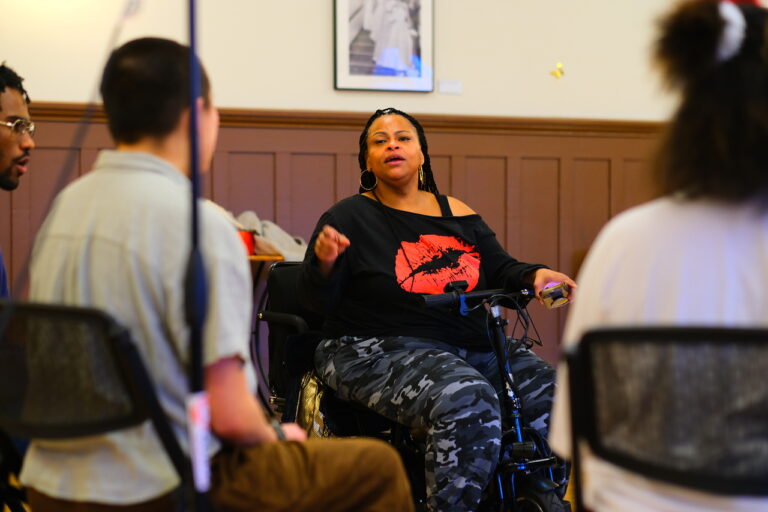

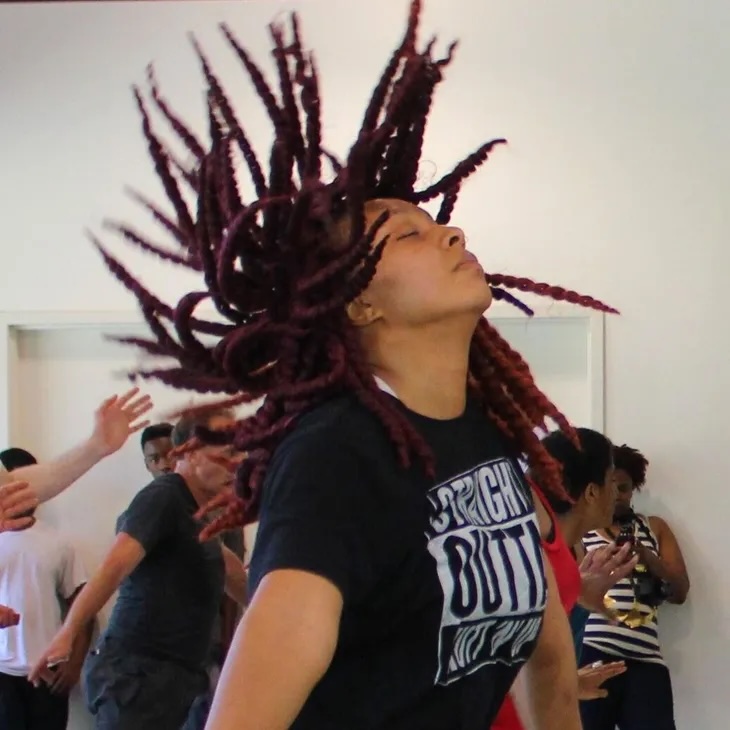
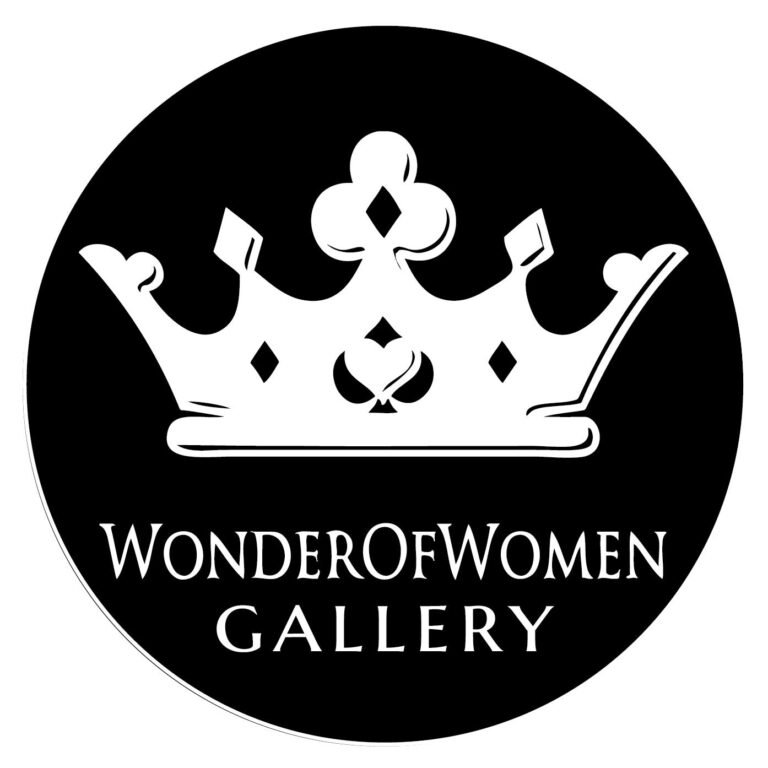
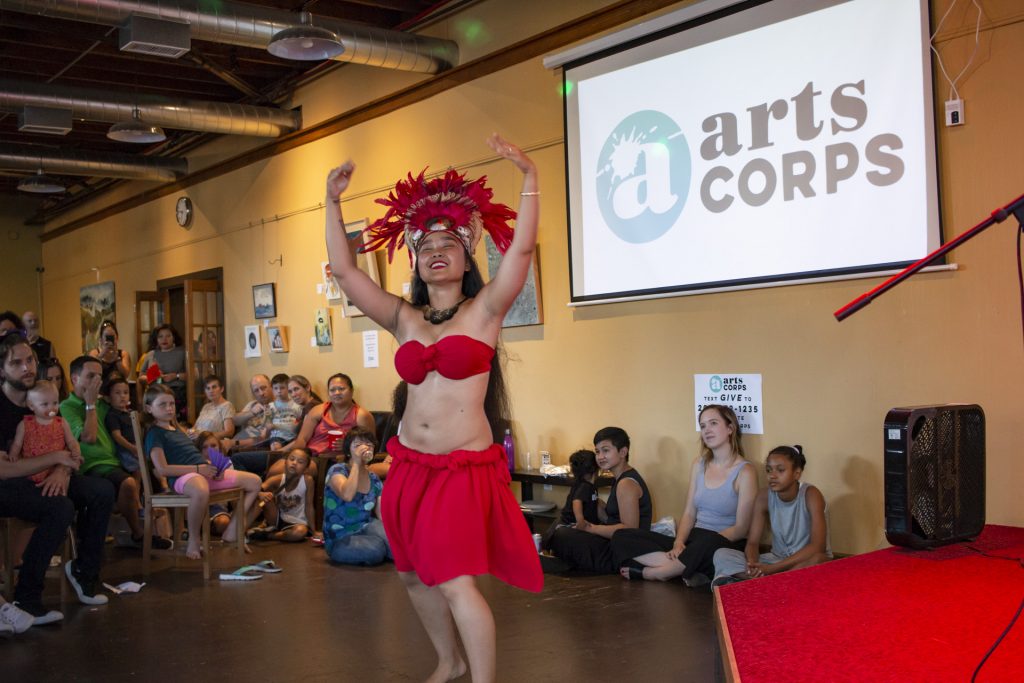
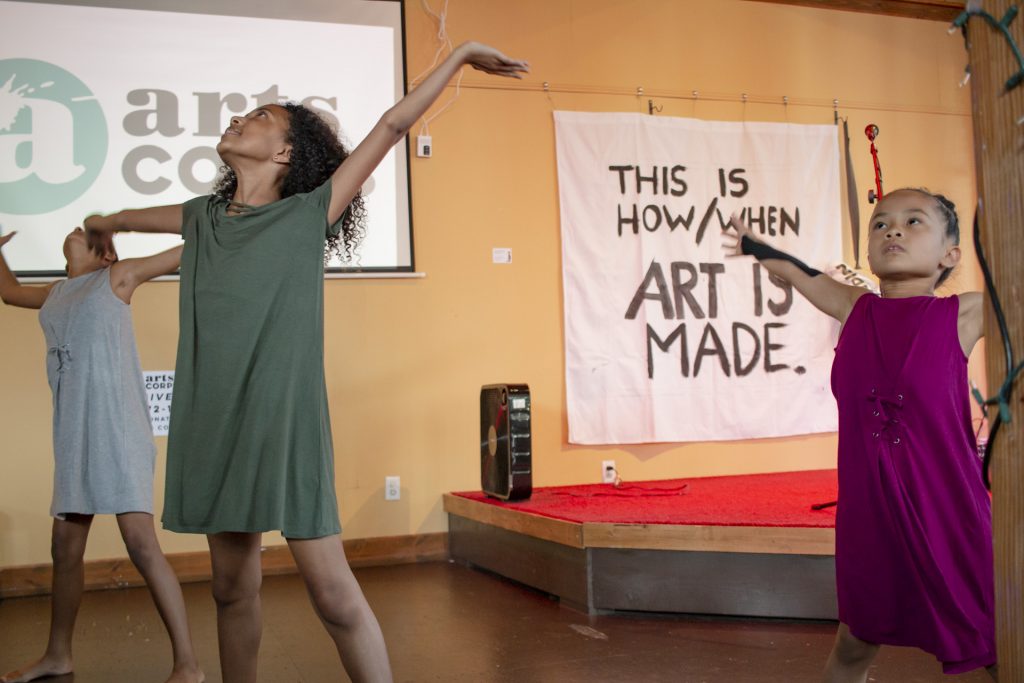

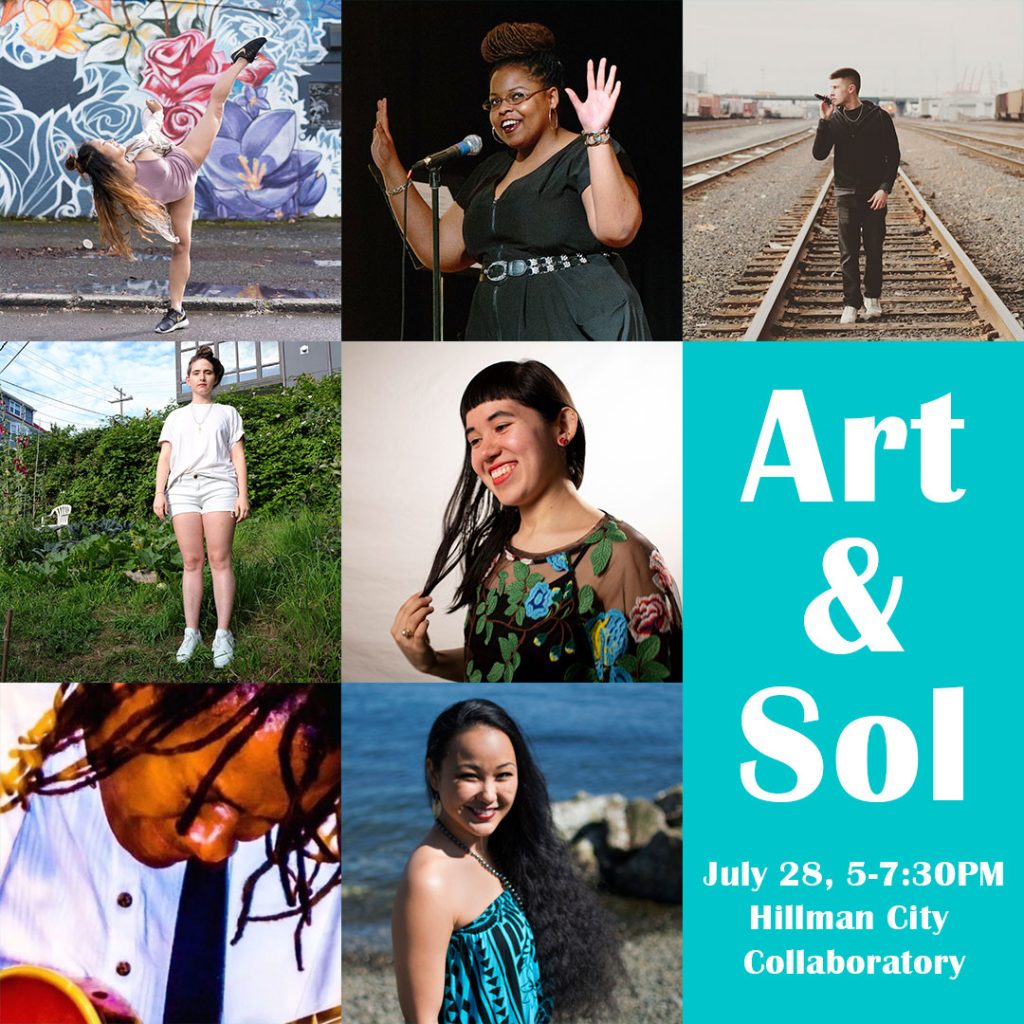

 Carlynn Newhouse is an African American poet, activist, actress, emcee, and performer. She holds the record for the only 3 time Youth Speaks Seattle Grand Slam Champion (2015, 2017, 2018) and competed in the Brave New Voices poetry festival in years 2015-2018. Carlynn has performed at well known venues such as Seattle Town Hall, Bumbershoot, the Kennedy Center, and others. Carlynn’s work has been featured in Crosscut, the Seattle Review of Books, and XQ Super School Live. She writes about love, loss, community, race, the Black Lives Matter movement, faith, mental health, gender, and the life experiences that made her who she is today. She believes poetry is a form of activism and tool for raising awareness in hopes of making the world a safer space.
Carlynn Newhouse is an African American poet, activist, actress, emcee, and performer. She holds the record for the only 3 time Youth Speaks Seattle Grand Slam Champion (2015, 2017, 2018) and competed in the Brave New Voices poetry festival in years 2015-2018. Carlynn has performed at well known venues such as Seattle Town Hall, Bumbershoot, the Kennedy Center, and others. Carlynn’s work has been featured in Crosscut, the Seattle Review of Books, and XQ Super School Live. She writes about love, loss, community, race, the Black Lives Matter movement, faith, mental health, gender, and the life experiences that made her who she is today. She believes poetry is a form of activism and tool for raising awareness in hopes of making the world a safer space.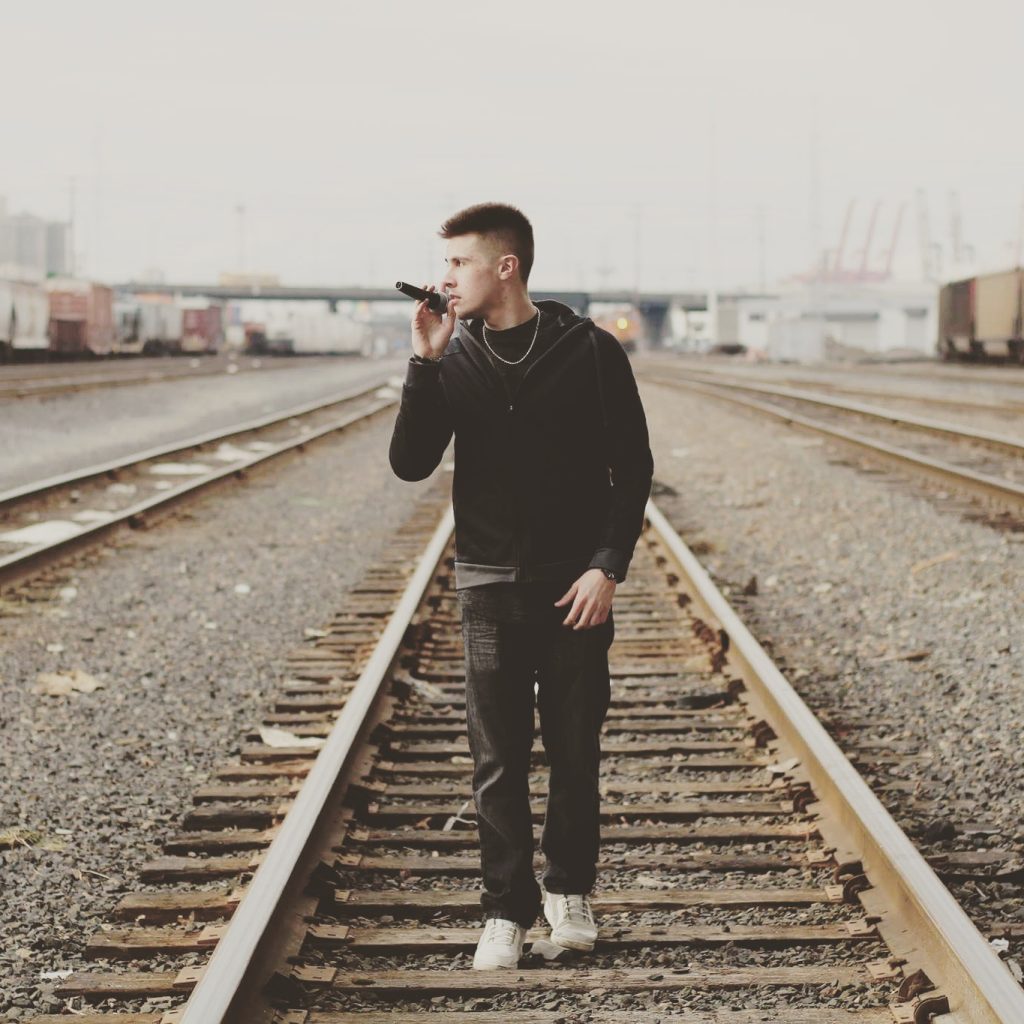 Michaelson is a 2 year alumni of The Residency program. With years of foundation building, this summer marks the release schedule for Michaelson’s first studio project “This Is Why”, which is being engineered by Jake Crocker, and is set to start releasing singles here very soon.
Michaelson is a 2 year alumni of The Residency program. With years of foundation building, this summer marks the release schedule for Michaelson’s first studio project “This Is Why”, which is being engineered by Jake Crocker, and is set to start releasing singles here very soon. At age 15, Shelby Handler performed at a poetry slam for the first time and upon finishing their piece, immediately ran off the stage. Since then, Shelby has been running back and forth from the stage and supporting the next generation of poets to take the mic. As a writer and performer, Shelby explores ritual, queerness and an endless search for home. Their work has been featured in anthologies, public buses, literary journals and stages across the country. Shelby is honored to call Youth Speaks Seattle one of their forever poetry homes. They used to manage the Teen Leadership Program but henceforth, they shall assume the role of Awkward Fan Grrl at the slam series and if they’re lucky, a teaching artist for Arts Corps and YOUTH SPEAKS!
At age 15, Shelby Handler performed at a poetry slam for the first time and upon finishing their piece, immediately ran off the stage. Since then, Shelby has been running back and forth from the stage and supporting the next generation of poets to take the mic. As a writer and performer, Shelby explores ritual, queerness and an endless search for home. Their work has been featured in anthologies, public buses, literary journals and stages across the country. Shelby is honored to call Youth Speaks Seattle one of their forever poetry homes. They used to manage the Teen Leadership Program but henceforth, they shall assume the role of Awkward Fan Grrl at the slam series and if they’re lucky, a teaching artist for Arts Corps and YOUTH SPEAKS!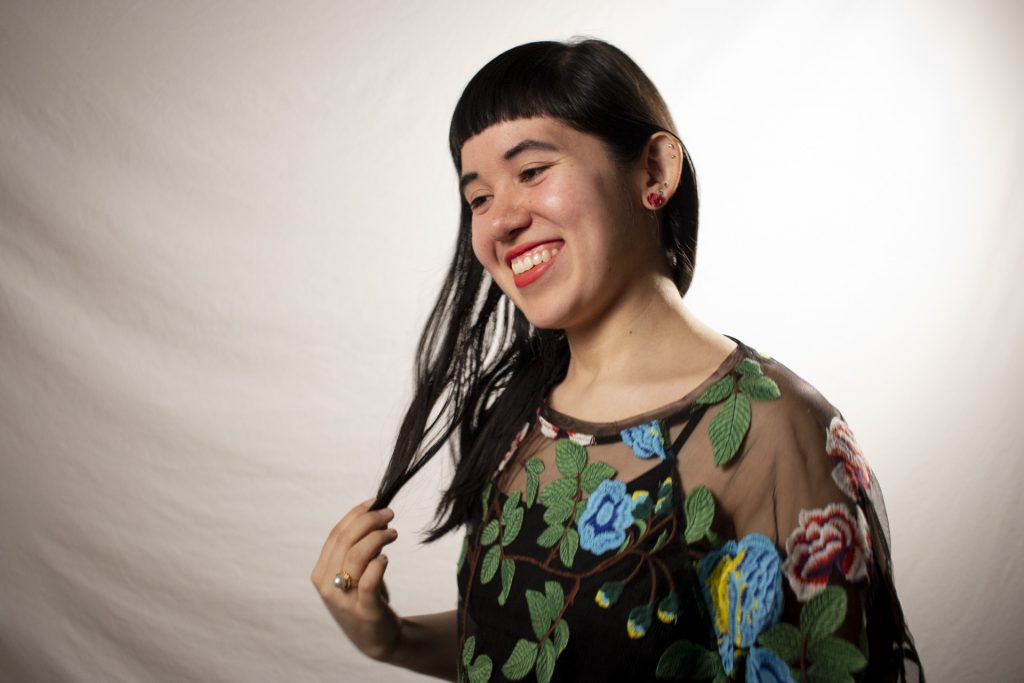 Amy is a multimedia artist, audio engineer, vocalist, and teaching artist who got started on her artistic journey through Arts Corps’ All Access program 10 years ago. She is currently Arts Corps’ Media & Communications Manager, with the honor of being able to take photos and produce videos capturing the unique stories of young artists and changemakers. She is constantly inspired by the young artists she gets to work with and has recently started writing some fresh songs after a long hiatus.
Amy is a multimedia artist, audio engineer, vocalist, and teaching artist who got started on her artistic journey through Arts Corps’ All Access program 10 years ago. She is currently Arts Corps’ Media & Communications Manager, with the honor of being able to take photos and produce videos capturing the unique stories of young artists and changemakers. She is constantly inspired by the young artists she gets to work with and has recently started writing some fresh songs after a long hiatus.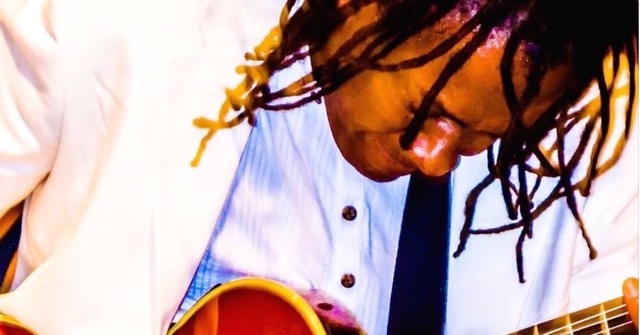 Eduardo has been with Arts Corps since its inception as a veteran master teaching artist and the current Director of Creative Youth Development. A native of Salvador, Bahia, Brazil, he is a musician, composer, arranger, and musical director, exploring the many and varied genres of Brazilian popular music.
Eduardo has been with Arts Corps since its inception as a veteran master teaching artist and the current Director of Creative Youth Development. A native of Salvador, Bahia, Brazil, he is a musician, composer, arranger, and musical director, exploring the many and varied genres of Brazilian popular music.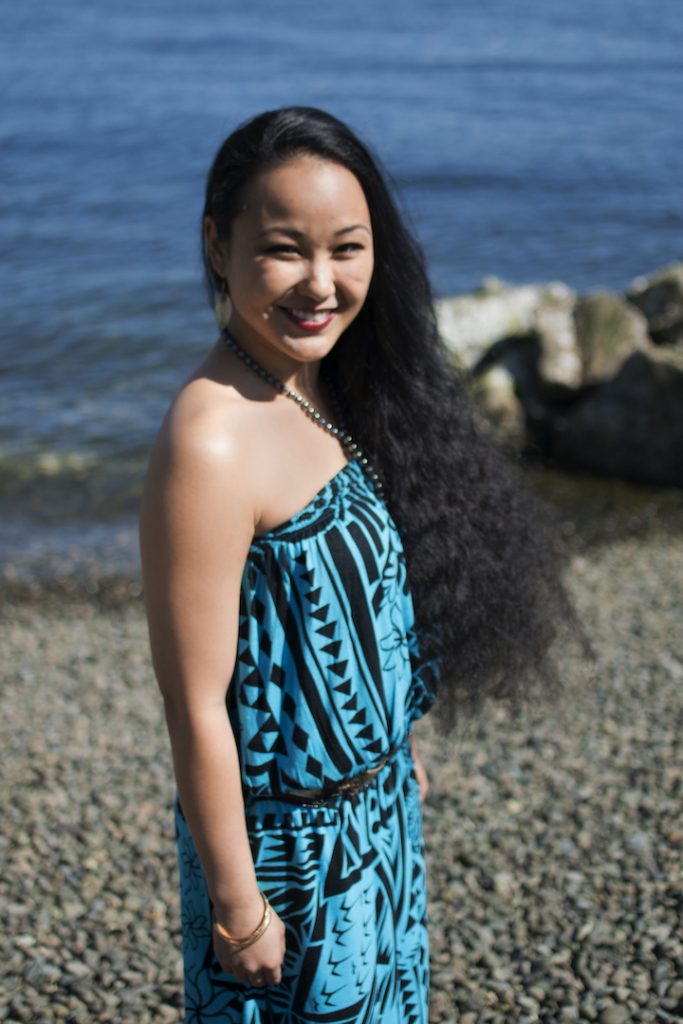 Kalei’okalani (Kalei) is of Kanaka Maoli, Japanese, Chinese, and Black heritage and was born and raised in Wai’anae, O’ahu. She is the founding leader of Huraiti Mana, a Seattle-based Polynesian Dance Troupe where classes are infused with laughter, shared stories, and passionate work. Kalei has been dancing Ori Tahiti since she was six years old, finding herself in the fast beats of the ote’a and aparima; and in the slow beats of the ahuroa. She considers herself ha’api’i, a word of the Tahitian language meaning both to teach and to learn. As Kalei continues teaching, she learns and gains tenfold, the knowledge of her huraiti, her cultures, and her self. Kalei aspires to continue teaching, studying, and sharing the love of her people through Ori. She is an Arts Corps teaching artist, bringing Hula Mai `Oe to Hazel Valley Elementary students.
Kalei’okalani (Kalei) is of Kanaka Maoli, Japanese, Chinese, and Black heritage and was born and raised in Wai’anae, O’ahu. She is the founding leader of Huraiti Mana, a Seattle-based Polynesian Dance Troupe where classes are infused with laughter, shared stories, and passionate work. Kalei has been dancing Ori Tahiti since she was six years old, finding herself in the fast beats of the ote’a and aparima; and in the slow beats of the ahuroa. She considers herself ha’api’i, a word of the Tahitian language meaning both to teach and to learn. As Kalei continues teaching, she learns and gains tenfold, the knowledge of her huraiti, her cultures, and her self. Kalei aspires to continue teaching, studying, and sharing the love of her people through Ori. She is an Arts Corps teaching artist, bringing Hula Mai `Oe to Hazel Valley Elementary students.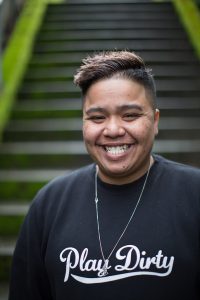 Ebo Barton is a Transgender and Non Binary, Black and Filipino poet and artist. Originally from Los Angeles, California, but really, the San Fernando Valley but no one ever knows where that is. As a representative of Seattle, they’ve been on 4 National Slam Teams and participated at 3 Individual World Poetry Slams. Their most notable poetry slam accolade is placing 5th in the world in 2016. Ebo wrote and directed the award-winning play, Rising Up. They and their work have been featured in Seattle Weekly, Seattle Gay News, Button Poetry and some other places. Their work touches on political issues from a personal point of view and often is birthed from the struggles of living in the identities that they are. Ebo believes in the power of language and art as a tool for revolution.
Ebo Barton is a Transgender and Non Binary, Black and Filipino poet and artist. Originally from Los Angeles, California, but really, the San Fernando Valley but no one ever knows where that is. As a representative of Seattle, they’ve been on 4 National Slam Teams and participated at 3 Individual World Poetry Slams. Their most notable poetry slam accolade is placing 5th in the world in 2016. Ebo wrote and directed the award-winning play, Rising Up. They and their work have been featured in Seattle Weekly, Seattle Gay News, Button Poetry and some other places. Their work touches on political issues from a personal point of view and often is birthed from the struggles of living in the identities that they are. Ebo believes in the power of language and art as a tool for revolution.